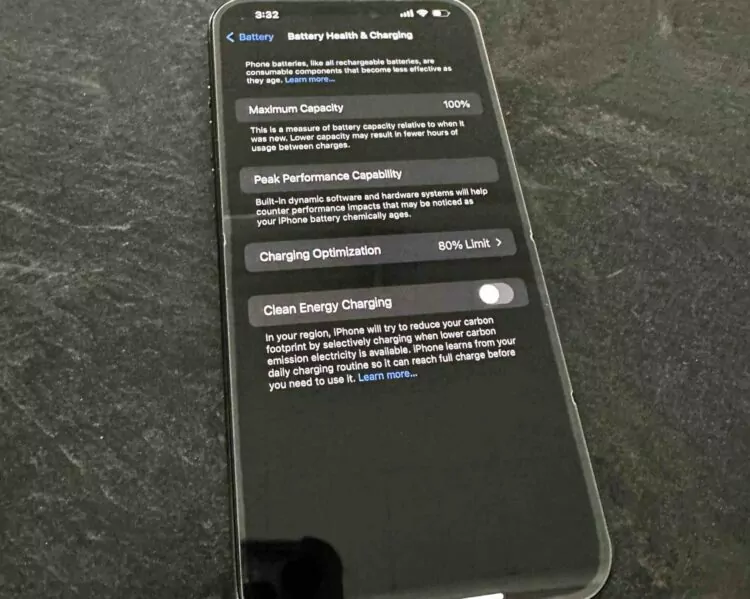The iPhone 15 has brought with it a plethora of innovative features, but one that stands out is the ability to view the battery’s cycle count. This feature, while seemingly simple, holds significant importance for users who wish to monitor their device’s battery health.
What are Battery Cycles?
A battery cycle refers to the process of charging a battery from 0% to 100%. This doesn’t necessarily mean a single charge from 0% to 100%.
For instance, if you use 75% of your battery one day and recharge it fully, then use 25% the next day, it counts as one complete battery cycle. Over time, as the number of cycles increases, the battery’s capacity to hold charge diminishes.

Understanding the Lifespan of Battery Cycles
Typically, a modern smartphone battery, which is usually lithium-ion, has a lifespan of about 2 to 3 years.
This translates to approximately 300 to 500 charge cycles as rated by manufacturers. After reaching this cycle count, the battery’s capacity starts to degrade, meaning it won’t hold as much charge as it did when it was new.
It’s essential to understand that the total lifespan of a battery is not just determined by the number of cycles but also by its usage patterns.
For example, frequently draining a battery to 0% before charging can reduce its overall lifespan. Conversely, keeping a battery charged between 20% and 80% can prolong its life.

Why Battery Cycles Matter
The concept of battery cycles is crucial for several reasons:
- Device Longevity: Knowing the number of cycles your battery has gone through can give you an idea of its remaining lifespan. If you’re nearing the 500-cycle mark, you might start to notice reduced battery performance.
- Economic Considerations: Replacing a phone battery can be costly. By understanding and monitoring battery cycles, users can optimize their charging habits to prolong battery life, thereby saving money in the long run.
- Environmental Impact: Extending the life of your phone’s battery reduces the need for frequent replacements, leading to less electronic waste. This is beneficial for the environment as discarded batteries can be harmful if not disposed of properly.
In conclusion, while battery cycles are a technical aspect of smartphones, they have practical implications for users.
By understanding and monitoring them, users can ensure they get the most out of their devices, both in terms of performance and longevity.
How to Access the Battery Cycle Feature on iPhone 15
Accessing this feature on the iPhone 15 is straightforward:
- Open the Settings app.
- Navigate to General -> About.
- Scroll down to the “Battery” section.
- Here, you’ll find information not only about the number of battery cycles but also the production date and the date of its first use.
Benefits of Monitoring Battery Cycles
By keeping an eye on the battery cycles, users can:
- Gain insights into the battery’s health and longevity.
- Make informed decisions about when a battery replacement might be necessary.
- Ensure optimal device performance by maintaining battery health.
Comparison with Previous iPhone Models
In the past, checking an iPhone’s battery cycle count was not straightforward. Users had to rely on unofficial methods, like third-party apps, or more complicated processes involving copying and pasting analytics data.
The iPhone 15 has simplified this by integrating the feature directly into the device’s settings.

Tips and Best Practices
- Regularly monitor your battery cycles to keep track of battery health.
- Avoid draining your battery completely; frequent shallow discharges are better than infrequent deep discharges.
- Consider a battery replacement if you notice a significant drop in battery performance and a high cycle count.
Broader Implications for the Smartphone Industry
The debut of the battery cycle feature in the iPhone 15 highlights the escalating focus on device longevity and sustainability, a sentiment echoed in this post.
This innovation could potentially pave the way for other manufacturers to follow suit, offering consumers the necessary tools to maximize the lifespan of their devices.
The inclusion of the battery cycle feature transcends a mere technical specification; it stands as a reflection of Apple’s dedication to transparency, sustainability, and enriching the user experience.
As our reliance on devices continues to grow, such features are pivotal in ensuring we can utilize them effectively and efficiently.


